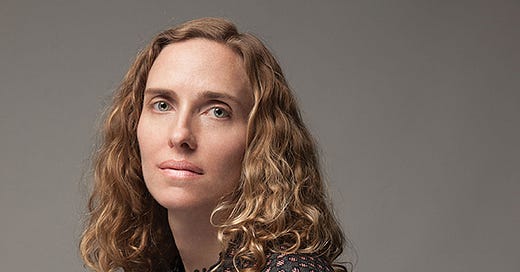When an author we’ve read is alive, we will send some questions their way. With our current theme of books, every author we’ll read is no longer living. And when this happens, we field questions to academics and experts.
Deborah Lutz is a professor of English at the University of Louisville. Her scholarship focuses on Victorian literature; material culture; the history of sexuality; gender and LGBTQ+ studies; and the history of the book. She has been awarded a National Endowment for the Humanities (NEH) Fellowship, an American Council of Learned Societies Fellowship, a Mellon Foundation Fellowship at the Huntington Library, and others. Her writing has appeared in numerous journals, collections, and newspapers, including the New York Times. She has been interviewed by the New York Times, the History Channel, National Public Radio, and other venues. She has been invited to speak at the Smithsonian, the New York Public Library, Oxford University, University of London, and elsewhere. She is the editor of two Norton Critical Editions—Jane Eyre and Strange Case of Dr. Jekyll and Mr. Hyde—and she is currently writing a biography of Emily Brontë.
So without further adieu, here are some questions and answers:
In Treasure Island, there aren't female characters. For similar novels around this time, is this typical or atypical?
There are lots of female characters in novels at this time! Not many in Stevenson's novels, though. He didn't think he was good at writing female characters (and he was probably right). He liked to write these "boys" adventures, especially, and they contain just men and boys. Though his Jekyll and Hyde also contains almost no women. Some have done queer readings of this. Stevenson had a lot of gay friends, though he himself was seemingly straight - he had a wife he was very close with.
Many things (plot, treasure maps, character features, etc.) felt familiar to our group as we read the book. Is Stevenson cribbing and copying from other works in a big way, or is he laying out the template?
I would say he is setting out the template. This book is sooo famous - it has influenced so many stories after it. One influence on him, though, was definitely Robinson Crusoe. Such a fun read.What were pirate novels like before Treasure Island and what are they like after?
Pirate novels were popular throughout the nineteenth century, and one important early tale was Lord Byron's long poem The Corsair (basically "pirate" in French.) But that is more a romantic (love) story, with the main hero being attractive to those around him. Stevenson doesn't really do this - his is more adventure straight up - without the romance. Pirate stories enter pornography in the 19thc (and maybe a little earlier) - the pirate abducts women (and men). There are also many pirate-type tales in the early 20thc that include the romance narrative - often written by women and having a happy ending (marriage, the pirate reformed through love).One thing that jarred our readers was the brief shift from Jim Hawkins to the Doctor. They didn't like that. Any insight on why Stevenson did this? Or what he hoped to achieve?
I'm not sure about that shift. He really valued including various characters' points of views, though. In Jekyll and Hyde, for instance, he has distinct sections which tell the story from the eyes of different characters. This leads to suspense and a certain scary creepiness. Also to the sense that there isn't one true story, but many versions.
There you have it. Hope you enjoyed the answers. And we hope you’re reading something good!
See you next week,
E





